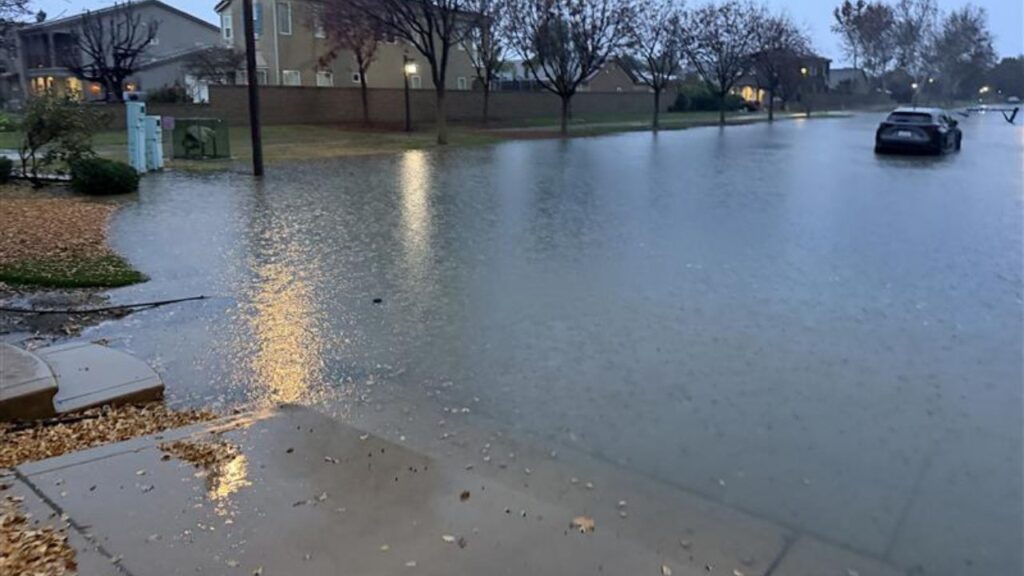Share
DUBAI, United Arab Emirates — A fire and an explosion struck a building above Iran’s underground Natanz nuclear enrichment facility early on Thursday, a site that U.S.-based analysts identified as a new centrifuge production plant.
Kamalvandi did not identify what damaged the building, though Natanz governor Ramazanali Ferdowsi said a “fire” had struck the site, according to a report by the semiofficial Tasnim news agency. Authorities offered no cause for the blaze, though Iran’s state-run IRNA news agency published a commentary addressing the possibility of sabotage by enemy nations such as Israel and the U.S. following other recent explosions in the country.
“The Islamic Republic of Iran has so far has tried to prevent intensifying crises and the formation of unpredictable conditions and situations,” the commentary said. But ”the crossing of red lines of the Islamic Republic of Iran by hostile countries, especially the Zionist regime and the U.S., means that strategy … should be revised.”
A photograph later released by the atomic energy agency and state TV video showed a brick building with scorch marks and its roof apparently destroyed. Debris on the ground and a door that looked blown off its hinges suggested an explosion accompanied the blaze.
Data collected by a U.S. National Oceanic and Atmospheric Administration satellite suggested the fire broke out around 2 a.m. local time in the northwest corner of the Natanz compound. Flames from the blaze were bright enough to be detected by the satellite from space.
There Was No Previously Announced Construction Work at Natanz
“There are physical and financial damages and we are investigating to assess,” Kamalvandi told Iranian state television. “Furthermore, there has been no interruption in the work of the enrichment site. Thank God, the site is continuing its work as before.”
The site of the fire corresponds to a newly opened centrifuge production facility, said Fabian Hinz, a researcher at the James Martin Center for Nonproliferation Studies at the Middlebury Institute of International Studies in Monterey, California. He said he relied on satellite images and a state TV program on the facility to locate the building, which sits in Natanz’s northwest corner.
David Albright of the Institute for Science and International Security similarly said the fire struck the production facility. His institute previously wrote a report on the new plant, identifying it from satellite pictures while it was under construction and later built.
Iranian nuclear officials did not respond to a request for comment about the analysts’ comments. However, any damage to the facility would be a major setback, said Hinz, who called the fire “very, very suspicious.”
“It would delay the advancement of the centrifuge technology quite a bit at Natanz,” Hinz said. “Once you have done your research and development, you can’t undo that research and development. Targeting them would be very useful” for Iran’s adversaries.
There was no previously announced construction work at Natanz, a uranium enrichment center some 250 kilometers (155 miles) south of the capital, Tehran. Natanz includes underground facilities buried under some 7.6 meters (25 feet) of concrete, which offers protection from airstrikes.

Natanz Hosts the Country’s Main Uranium Enrichment Facility
Natanz, also known as the Pilot Fuel Enrichment Plant, is among the sites now monitored by the International Atomic Energy Agency after Iran’s 2015 nuclear deal with world powers.
Located in Iran’s central Isfahan province, Natanz hosts the country’s main uranium enrichment facility. There, centrifuges rapidly spin uranium hexafluoride gas to enrich uranium. Currently, the IAEA says Iran enriches uranium to about 4.5% purity, above the terms of the nuclear deal, but far below weapons-grade levels of 90%. It also has conducted tests on advanced centrifuges, according to the IAEA.
The U.S. under President Donald Trump unilaterally withdrew from the nuclear deal in May 2018, setting up months of tensions between Tehran and Washington. Iran now is breaking all the production limits set by the deal, but still allows IAEA inspectors and cameras to watch its nuclear sites.
However, Natanz did become a point of controversy last year as Iranian officials refused to allow an IAEA inspector into the facility in October after allegedly testing positive for suspected traces of explosive nitrates. Nitrates are a common fertilizer. However, when mixed with proper amounts of fuel, the material can become an explosive as powerful as TNT. Swab tests, common at airports and other secure facilities, can detect its presence on the skin or objects.
Satellite Photos Show an Explosion Last Friday
Natanz also remains of particular concern to Tehran as it has been targeted for sabotage before. The Stuxnet computer virus, widely believed to be an American and Israeli creation, disrupted and destroyed centrifuges at Natanz amid the height of Western concerns over Iran’s nuclear program.
Satellite photos show an explosion last Friday that rattled Iran’s capital came from an area in its eastern mountains that analysts believe hides an underground tunnel system and missile production sites. Iran has blamed the blast on a gas leak in what it describes a “public area.”
Another explosion from a gas leak at a medical clinic in northern Tehran killed 19 people Tuesday.
Yoel Guzansky, a senior fellow at Israel’s Institute for National Security Studies and former Iran analyst for the prime minister’s office, said he didn’t know if there was an active sabotage campaign targeting Tehran. However, he said the series of explosions in Iran feel like “more than a coincidence.”
“Theoretically speaking, Israel, the U.S. and others have an interest to stop this Iran nuclear clock or at least show Iran there’s a price in going that way,” he said. “If Iran won’t stop, we might see more accidents in Iran.”
Late Thursday, the BBC’s Persian service said it received an email prior to the announcement of the Natanz fire from a group identifying itself as the Cheetahs of the Homeland, claiming responsibility for an attack on the centrifuge production facility at Natanz. This group, which claimed to be dissident members of Iran’s security forces, had never been heard of before by Iran experts and the claim could not be immediately authenticated by the AP.



















